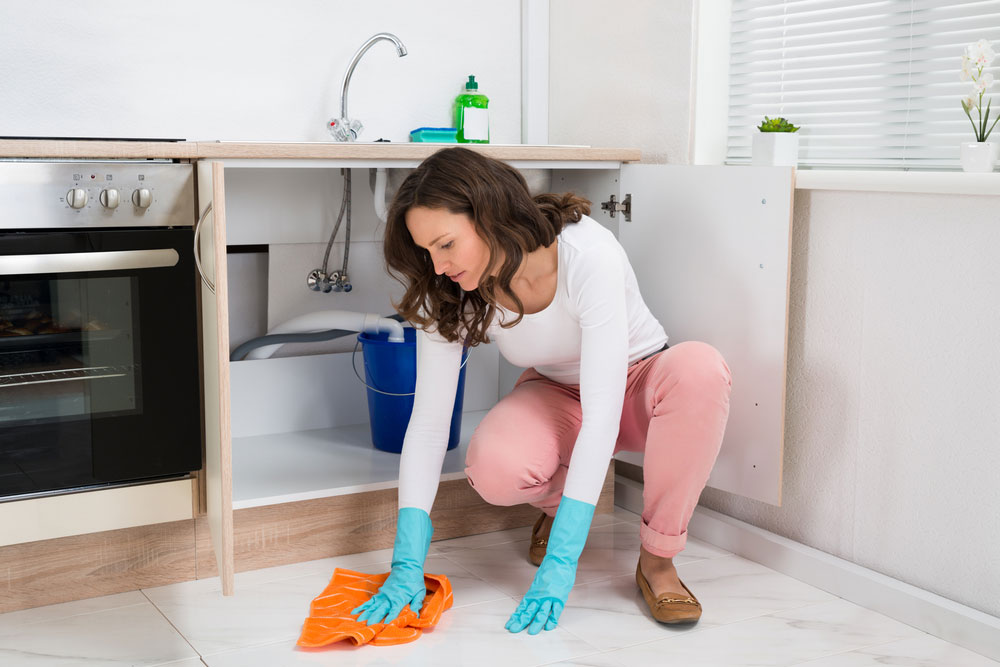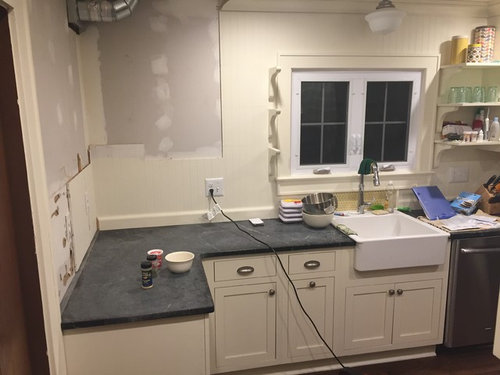Water Damage in the Kitchen: The 5 Most Common Types and Solutions
Water Damage in the Kitchen: The 5 Most Common Types and Solutions
Blog Article
We have discovered this article involving Most Common Causes of Residential Water Damage directly below on the internet and believe it made perfect sense to relate it with you here.

The cooking area is the space where a great deal of water activity takes place. You can hardly do anything without using water in the kitchen area, from food preparation, cleaning, and also doing the dishes.
Hence, checking your kitchen area from time to time is a requirement. Due to the fact that it has a higher possibility of obtaining water damage due to the home appliances you make use of there, this is.
When defective, these home appliances that regulate water could make your kitchen area unpleasant and impact the framework of your building over time.
Allow's check out some reasons of the water damage in the cooking area and what you ought to look out for.
Some Root Causes Of Water Problems in the Cooking area
These are a few reasons for water damage in the kitchen area.
Faulty Drainpipe Piping
Drain Pipes are needed parts of our residences, specifically in our kitchens and bathrooms. They get defective by getting obstructed, split, and also ruptured. Or even worse, they can be mistakenly or loosely connected; whichever the case may be, it can be a severe problem.
Damaged drain pipelines can trigger water damage and also, therefore, cause mold growth and damage the appearance of your wall surface. It can additionally make the damaged location look unpleasant.
It is advisable always to check to ensure that all the pipes are in good condition and get an audio pipes system to preserve as well as repair any concerns.
Faulty Cooking Area Sink
The kitchen sink is a vital and most used part of the kitchen. Hence it is prone to water damage; damages such as blocked pipes, dripping pipelines, and also damaged taps.
These problems can be frustrating, particularly when one is hectic in the kitchen area. Nevertheless, it doesn't just happen without offering a hint or an indication. Right here are some indications to know when your sink is not okay
These are the major problems that can occur to your kitchen sink. Nevertheless, one way to quit this damage is by ensuring that food fragments do not enter into the pipelines. You are also examining the pipes and also faucets as well as ensuring that it is appropriately fixed and also in good condition.
Leaking Dish washer
Dishwashers make life in the kitchen less complicated. It is an optional kitchen home appliance and also, when offered, can be a resource of water damage. Additionally, like various other machines, it will certainly create faults gradually, even with upkeep.
Among the faults is leaking with the door or under the dishwasher. These mistakes create due to age, fractures, incorrect usage, loosened web links to pipes, etc.
Mistakes due to age come from continual usage. Consequently, the door leakages as a result of opening and closing.
Faults from the wrong use might create water damage by introducing fractures to it. It is advisable to comply with the hands-on overview of the dish washer to prevent this particular damage.
The leakages under the dish washer can originate from splits in the gasket, hose, and loose or wrong link to pipes or drains.
This type of leakage typically goes undetected and also can be there for a long time. Nevertheless, as a result of the time frame, it might harm the flooring and trigger mold development.
Much more so, the longer the water stays, you will certainly observe the bending of the flooring where the dishwasher is. When inspecting if your dish washer leakages, this is an excellent indicator to look out for. Detecting and fixing this on time avoids major water damage to your flooring.
Bottom Line
Watching out for problems in your kitchen area can be charging however needed. It makes your job there much easier and also more secure.
Nonetheless, the causes noted above are only a few variables to take into consideration, specifically if your cooking area has a great deal of devices.
So get a specialist pipes solution to find about and also look for any type of damage and get them dealt with.
It makes your kitchen location wet and unpleasant, particularly when dripping from the pipelines. As well as if it is leaking from the faucet, it leads to water wastefulness.
It is an optional kitchen area home appliance and, when readily available, can be a resource of water damage. Much more so, the longer the water stays, you will certainly observe the warping of the flooring where the dish washer is. Finding and repairing this on time avoids serious water damage to your flooring.
WAYS TO PROTECT YOUR KITCHEN FROM WATER DAMAGE
The kitchen is one of the most significant rooms in your house, as it is a multipurpose room wherein you can do your cooking and cleaning. Nowadays, homeowners tend to ignore the problems under their sink or appliances because of their busy schedules. However, most household floods occur due to plumbing and appliance failure. One of the most common scenarios that cause water damage to your kitchen is when the dishwasher malfunctions and floods gallons of water.
Water damage in your kitchen can cause several problems, including cosmetic damage, mold growth, and even an unpleasant smell. Often, if you fail to neglect the problem, there are always consequences. This article will help you protect your kitchen from water damage.
Common Causes of Water damage in your kitchen
Pipe problems are the most common source of water leaks under your sink. If homeowners ignore this issue, it will burst and flood the kitchen. Dishwasher leaks can be a source of water damage in your kitchen. An old, broken, and defective dishwasher can cause leaks, damage to your floor, and even mold growth. Refrigerator leaks can cause water damage in your kitchen, as sometimes melted ice from defrosting can cause leaks. Furthermore, if your refrigerator has internal problems, it is very likely to cause water damage. Back-splash and sink caulking can cause discoloration and water damage to your countertop tiles. Ways to Protect Your Kitchen From Water Damage
Regular maintenance
The most important thing you can do to protect your kitchen from water damage is to inspect the sinks, drains, and pipes, as well as the kitchen appliances, regularly. As with the sink, check for missing or deteriorated caulk. Remove the old caulk and clean the area thoroughly and re-seal it with fresh silicone. Furthermore, sweep the drain regularly, empty the filter and dispose of the debris in the garbage, and inspect the supply lines and valve for cracks.
Check your appliances
Check the user’s manual for instruction and proper use of every water-related appliance installed in your kitchen. For the dishwasher, check this procedure to prevent the dishwasher from flooding your kitchen. Check the appliances that need water, such as the coffee maker, ice maker, and water cooler, as they can become the cause of water damage in your kitchen. You may call a professional to check and repair damaged appliances and professional restoration for water damage clean-up.
Garbage clean-up
Fats, oil, and grease are common in the kitchen. Pouring them down the drain can cause clogs and sewage backup, which may result in significant kitchen water damage. If your kitchen sink is clogged, use a solution of hot water, baking soda, and vinegar to unclog the fats and oils in the pipes. Also, make sure to throw out the debris in the trash and clean the sink properly using paper towels for greases and oil and soap or bleach solution for the sink itself.
Shut off your water line
Make sure to shut off your main water line, especially if you're away and having some flood issue. As mentioned, dishwasher leaks are one of the most common culprits of water damage in the kitchen. So, make sure to only use the dishwasher if someone is at home and available to attend in case a problem arises.
Furthermore, it is also important that every member of your household knows where the shut-off valves are located. So in case of an emergency, they can mitigate the damage by turning off the water source.
Install leak detectors
One of the best ways to catch water damage before it could even cause serious damage to your home or business is by installing a water or leak detector. A leak detector monitors the flow of water through a pipeline, can detect moisture in the air for molds, and tracks the water temperature. Also, it can shut off your water line in case of an emergency. Install leak detectors under the kitchen sink, near the dishwasher and refrigerator.
https://superiorrestore.com/7-ways-to-protect-your-kitchen-from-water-damage/

I came across that page on Water Damage in Kitchen while doing a lookup on the search engines. Appreciated our blog? Please share it. Help somebody else locate it. Thank you so much for taking the time to read it.
Set An Appointment Report this page